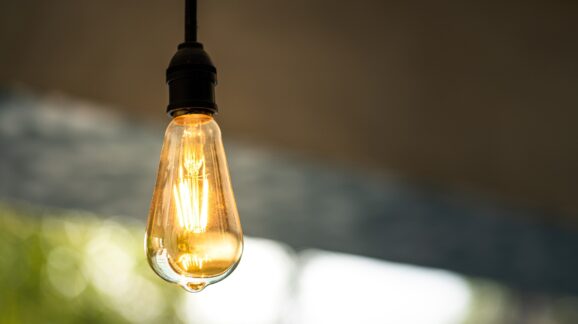CNN Cheers Proposed New Restrictions on Light Bulbs

Photo Credit: Getty
CNN has some great news for American consumers—your choices in light bulbs are being reduced!
The Department of Energy (DOE) will soon propose a new energy efficiency standard for light bulbs, and the agency gave CNN a sneak preview, presumably in the hopes the news outlet would do a favorable story. And did they ever.
According to CNN, the proposed new light bulb rule would mean everyone will soon benefit from Light Emitting Diode (LED) bulbs, the only kind likely to meet the tough new energy use limits. Quoting White House National Climate Advisor Ali Zaidi, these bulbs will save consumers significantly on their energy bills, since LED bulbs are more efficient than compact fluorescent lighting (CFL) lighting and far more efficient that traditional incandescent bulbs. “If a particular light fixture was costing someone $10 in a year, then it’s going to be costing much, much less,” said Zaidi. He also touted the climate change benefits of LED lighting, as less electricity use means fewer greenhouse gas emissions.
The story also contrasted this Biden administration light bulb proposal with the lack of such measures during the Trump administration, when DOE declined to set such standards and generally left it up to consumers to pick the light bulbs they wanted.
CNN notes that LED bulbs have rapidly gained market share in recent years, but this raises the question that CNN never asked—if they are catching on anyway, why do they need to be mandated by the government?
As is turns out, LED bulbs are not so good that they deserve to be the only game in town. Granted, good riddance for CFLs, those twisty light bulbs with the harsh glare and high price that environmentalists had long promoted as the next big thing. But the old-fashioned incandescent bulbs are worth saving as an option for those who prefer them.
As CEI and other free market organizations noted in comments to DOE earlier this year on another light bulb rule, LEDs cost several times more than incandescent bulbs and are not quite up to par for certain functions, such as dimming. In addition, given the lower purchase price, incandescent bulbs remain the most economical choice for rarely used light fixtures such as those in an attic.
No question, the day of incandescent bulbs dominating the market is over, but it is hard to see any upside to a government crackdown on those who still like them. And the growing numbers of consumers who prefer LED bulbs are free to choose them, with or without meddling from Washington.
It is also worth noting that allowing alternatives to LEDs to remain on the market exerts a measure of price discipline on these still-pricey bulbs that would disappear if they became the only available choice.
This proposed rule, along with others already finalized by the Biden administration, means that we are heading to a future of LED lighting, like it or not. Not the worst thing to come out of this administration, but hardly anything to celebrate.